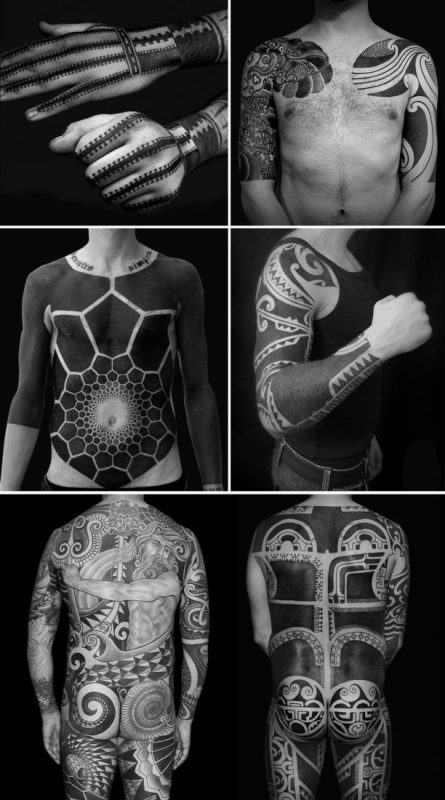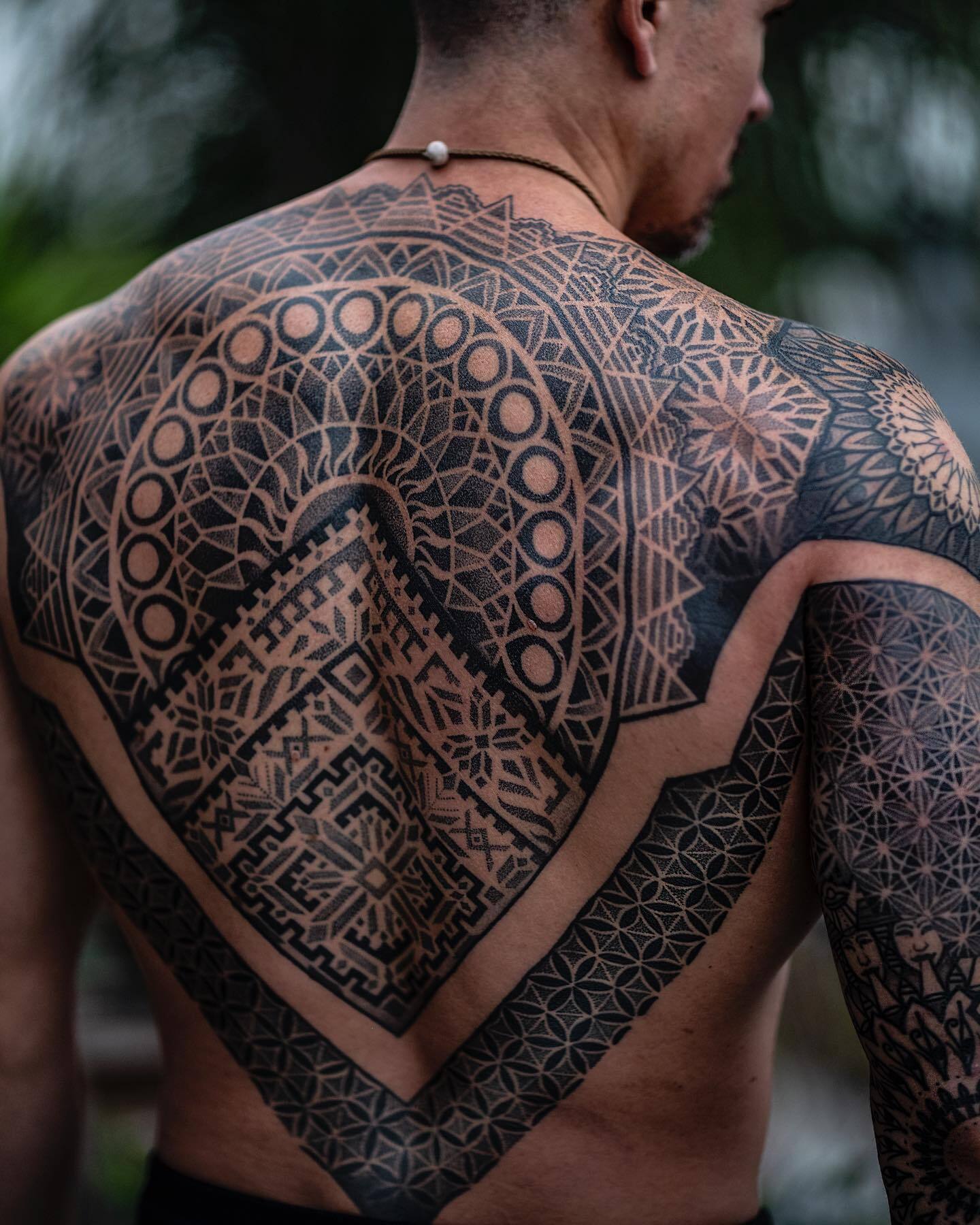
Style Guides: Blackwork Tattoo
- Мanagement
- Styles
- Blackwork

All about the origins and stylistic elements of the Blackwork tattoo.
- Tribal tattoos make up the majority of the blackwork tattoo style, however, dark art, illustrative and graphic art, etching or engraving style, and even lettering or calligraphic scripts are considered to be blackwork tattoo style when only black ink is used.
- Any design done exclusively in black ink with no added color or gray tones can be classified as Blackwork.
- The origins of blackwork lie in ancient tribal tattooing. Known for their often abstract patterns of shapes and swirls in large swathes of black ink, Polynesian artwork in particular had a huge influence on the style.
- Blackwork tattoo styles
- Origin of blackwork tattoo
Immediately recognizable by its lack of bright colors and shades of gray, the blackwork tattoo has gained popularity in recent years. But believe it or not, all-black panels and designs are not just a passing trend. In this article, we explore historical origins, contemporary styles, and some of the artists who have mastered Blackwork tattoos.
Blackwork tattoo styles
Although tribal tattoos make up a large part of the blackwork style, other aesthetic elements have been added to them recently. Dark art, illustrative and graphic art, etching or engraving style, lettering and calligraphic fonts are all considered part of blackwork. In short, style is a general term for tattoos done exclusively with black ink.
Elements of this tattoo style include thick outlines and bold, solid black areas juxtaposed with intentional negative space or "skin tears". Any design done exclusively in black ink with no added color or gray tones can be classified as Blackwork.
Origin of blackwork tattoo
Although blackwork tattoos have come to mean something completely different these days, the origins of the style lie in ancient tribal tattooing.
Known for their often abstract patterns of shapes and swirls in large swathes of black ink, Polynesian artwork in particular had a huge influence on the style. Curving around the organic contours of the body, these tattoos were usually based on the person's personality, with the tattoo artist using symbolism and tribal iconography to illustrate their life story or legend. Often, Polynesian tattoos personified the origin, beliefs, or affiliation of a person. They were protective and absolutely sacred in nature. Polynesian tattoo artists were considered almost like shamans or priests, possessing divine knowledge of the tattoo ritual. It is these ancient aspects of culture that have largely influenced modern blackwork tattooing, and many tribal style tattooists still return to this ancient aesthetic.
Another inspiration for the blackwork tattoo comes from what is commonly thought to be the Spanish blackwork, which is actually fine embroidery on fabric. Tightly twisted black silk threads were used either by counting stitch or freehand on white or light linen fabrics. Designs ranged from florals, such as maze patterns of ivy and flowers, to more complex compositions, such as stylized graphic knots.
No matter how far these folk arts are from modern blackwork tattooing, they help to recognize the various facets of historical artistic techniques and media that shape modern styles and aesthetics. Henna, for example, can be traced back to the Bronze Age, which covers the period from 1200 B.C. before 2100 BC This was 4,000 years ago in human history, and yet the application of a henna dye called mehndi can easily be associated with modern ornamental and ornamental tattoos, most of which are considered a form of blackwork tattooing simply due to the lack of color. Due to the ancient origins of henna, artists working in this style may also lean towards more tribal or primitive designs. It's all a matter of artistic expression and connection.
Blackwork tattoo artists working in the dark arts tend to use an illustrative approach that draws inspiration from esotericism, alchemy, and other arcane hermetic iconography.
Another aesthetic associated with the esoteric arts is Sacred Geometry, a Blackwork tattoo style that is extremely popular. From ancient Hindu texts to Plato's idea that God placed perfect geometric structures hidden in the fullness of the natural world, ideals can be seen in fractals, mandalas, Kepler's Platonic Solids and more. Establishing divine proportions in everything, sacred geometric tattoos are often made up of lines, shapes and dots and are based on Buddhist, Hindu and sigil symbolism.
With such a wide range of aesthetics and personal touches included in the overall Blackwork tattoo styles, the options are nearly limitless. Because of the ease of clarity in design, the way black ink appears on skin of any color, and the fact that it ages incredibly well, makes this particular way of tattooing adaptable to any design or concept. Because Blackwork is infused with the techniques of ancient times, it is tried and true.
Leave a Reply